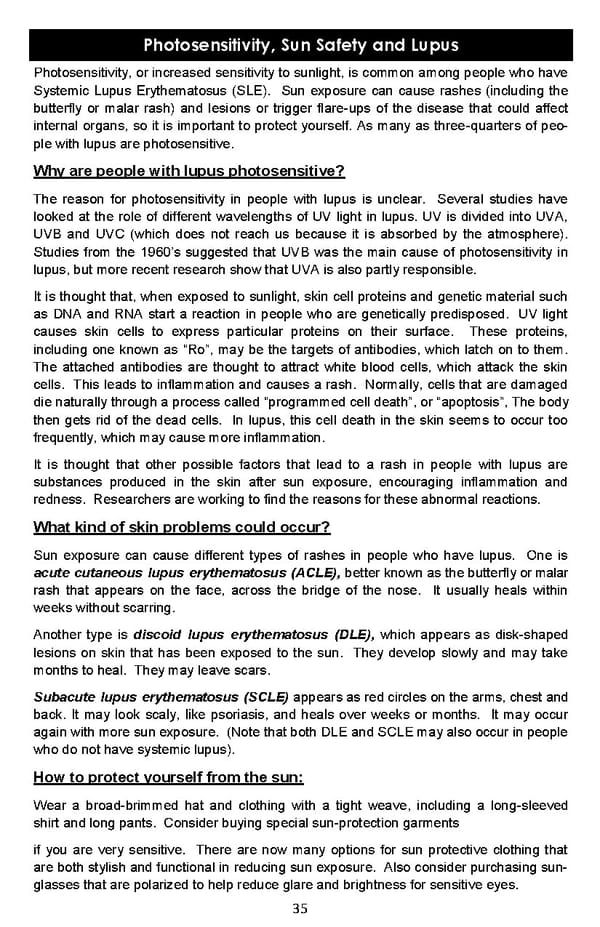Photosensitivity, Sun Safety and Lupus Photosensitivity, or increased sensitivity to sunlight, is common among people who have Systemic Lupus Erythematosus (SLE). Sun exposure can cause rashes (including the butterfly or malar rash) and lesions or trigger flare-ups of the disease that could affect internal organs, so it is important to protect yourself. As many as three-quarters of peo- ple with lupus are photosensitive. Why are people with lupus photosensitive? The reason for photosensitivity in people with lupus is unclear. Several studies have looked at the role of different wavelengths of UV light in lupus. UV is divided into UVA, UVB and UVC (which does not reach us because it is absorbed by the atmosphere). Studies from the 1960’s suggested that UVB was the main cause of photosensitivity in lupus, but more recent research show that UVA is also partly responsible. It is thought that, when exposed to sunlight, skin cell proteins and genetic material such as DNA and RNA start a reaction in people who are genetically predisposed. UV light causes skin cells to express particular proteins on their surface. These proteins, including one known as “Ro”, may be the targets of antibodies, which latch on to them. The attached antibodies are thought to attract white blood cells, which attack the skin cells. This leads to inflammation and causes a rash. Normally, cells that are damaged die naturally through a process called “programmed cell death”, or “apoptosis”, The body then gets rid of the dead cells. In lupus, this cell death in the skin seems to occur too frequently, which may cause more inflammation. It is thought that other possible factors that lead to a rash in people with lupus are substances produced in the skin after sun exposure, encouraging inflammation and redness. Researchers are working to find the reasons for these abnormal reactions. What kind of skin problems could occur? Sun exposure can cause different types of rashes in people who have lupus. One is acute cutaneous lupus erythematosus (ACLE), better known as the butterfly or malar rash that appears on the face, across the bridge of the nose. It usually heals within weeks without scarring. Another type is discoid lupus erythematosus (DLE), which appears as disk-shaped lesions on skin that has been exposed to the sun. They develop slowly and may take months to heal. They may leave scars. Subacute lupus erythematosus (SCLE) appears as red circles on the arms, chest and back. It may look scaly, like psoriasis, and heals over weeks or months. It may occur again with more sun exposure. (Note that both DLE and SCLE may also occur in people who do not have systemic lupus). How to protect yourself from the sun: Wear a broad-brimmed hat and clothing with a tight weave, including a long-sleeved shirt and long pants. Consider buying special sun-protection garments if you are very sensitive. There are now many options for sun protective clothing that are both stylish and functional in reducing sun exposure. Also consider purchasing sun- glasses that are polarized to help reduce glare and brightness for sensitive eyes. 35
 Living Well With Lupus Facts Booklet Page 34 Page 36
Living Well With Lupus Facts Booklet Page 34 Page 36